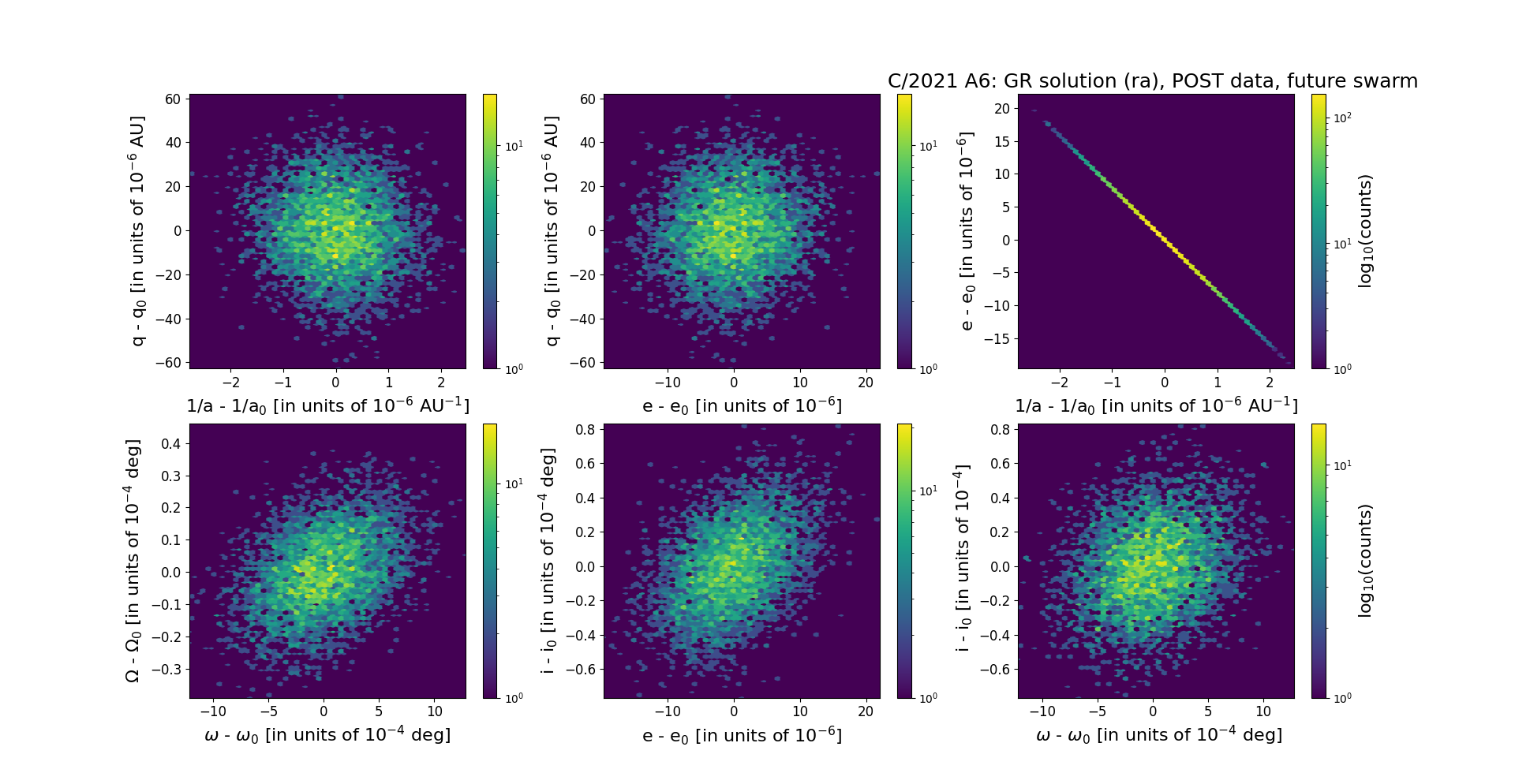C/2021 A6 PanSTARRS
more info
Comet C/2021 A6 was discovered on 8 January 2021, about 4 months before its perihelion passage; later a series of prediscovery images was found from 22 December 2020 and 26 November 2020. This comet was observed until 28 July 2024 (as in February 2025).
Comet had its closest approach to the Earth on 4 March 2021 (6.97 au); two months before the perihelion passage.
Solution given here is based on data span over 3.67 yr in a range of heliocentric distances: 7.99 au – 7.93 au (perihelion) – 10.59 au. Orbits based on pre-perihelion and post-perihelion data were also obtained, separately.
This Oort spike comet suffers tiny planetary perturbations during its passage through the planetary system that lead to a bit tight future orbit.
Comet had its closest approach to the Earth on 4 March 2021 (6.97 au); two months before the perihelion passage.
Solution given here is based on data span over 3.67 yr in a range of heliocentric distances: 7.99 au – 7.93 au (perihelion) – 10.59 au. Orbits based on pre-perihelion and post-perihelion data were also obtained, separately.
This Oort spike comet suffers tiny planetary perturbations during its passage through the planetary system that lead to a bit tight future orbit.
| solution description | ||
|---|---|---|
| number of observations | 66 | |
| data interval | 2021 12 29 – 2023 05 24 | |
| data arc selection | data generally limited to post-perihelion (POS) | |
| range of heliocentric distances | 8.06 au – 9.13au | |
| detectability of NG effects in the comet's motion | NG effects not determinable | |
| type of model of motion | GR - gravitational orbit | |
| data weighting | YES | |
| number of residuals | 128 | |
| RMS [arcseconds] | 0.19 | |
| orbit quality class | 1a | |
| orbital elements (barycentric ecliptic J2000) | ||
|---|---|---|
| Epoch | 2332 11 12 | |
| perihelion date | 2021 05 04.47998801 | ± 0.00510576 |
| perihelion distance [au] | 7.93750206 | ± 0.00001741 |
| eccentricity | 0.99911661 | ± 0.00000578 |
| argument of perihelion [°] | 351.720311 | ± 0.000362 |
| ascending node [°] | 164.052698 | ± 0.000012 |
| inclination [°] | 75.548997 | ± 0.000024 |
| reciprocal semi-major axis [10-6 au-1] | 111.29 | ± 0.73 |
| file containing 5001 VCs swarm |
|---|
| 2021a6ra.bpl |

